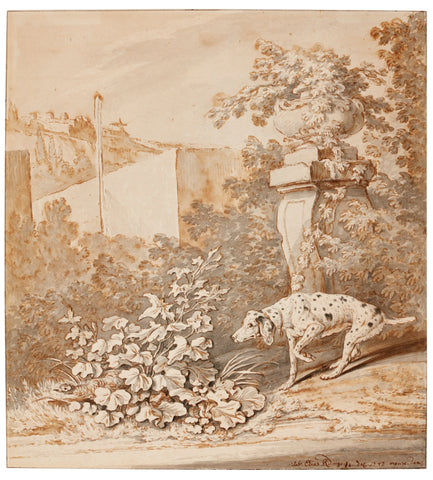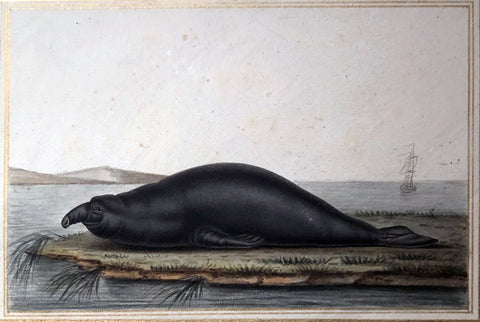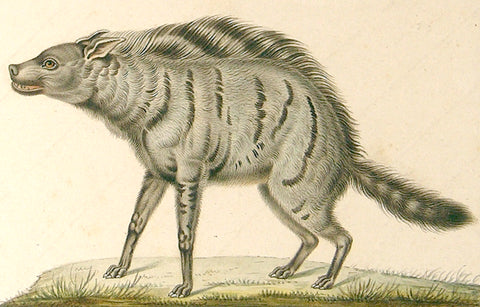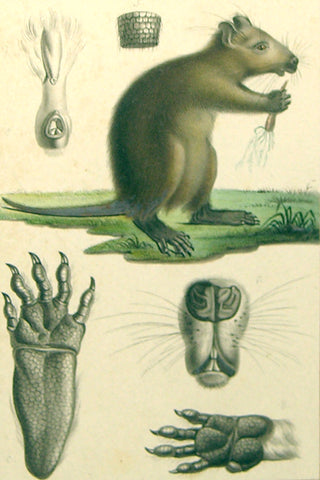
JOHANN ELIAS RIDINGER (GERMAN, 1698-1767), Dalmatian Chasing a Pheasant
JOHANN ELIAS RIDINGER (GERMAN, 1698-1767)
Dalmatian Chasing a Pheasant
Pen and brown ink and brown and grey wash over traces of black chalk within black ink framing lines, indented for transfer and reddened on the verso, for transfer on paper
Signed and dated in pen and brown ink, lower right: Joh. Elias Ridinger. del. 1743. mense. Jan: and bears numbering in pen and brown ink, verso: No716.
This drawing appears to relate to the print recorded in the catalogue raisonne by Thienemann, no. 274, p. 68
Mount size: 12 ¾ x 11 ¾ in.
Drawing size: 11 7/8 x 10 ¾ in.
Johann Elias Ridinger was a renowned German draftsperson and printmaker during the 18th century. He was born in Ulm in 1698, and his father, a scribe, modeled small equestrian and animal figures in his free time. Johann's training in art began with the painter Christopher Resch. Later, he moved to Augsburg, where he was mentored by Johann Falch, an animal and still-life painter who emphasized the importance of studying nature. Johann then worked with Wolff Freiherr von Metternich in 1719, who became his close friend and patron. Ridinger accompanied Metternich to Regensburg, where he witnessed hunting and observed horses at the riding school. Later, in 1722, he returned to Augsburg, where he studied under the tutelage of painter and engraver Georg Phillip Rugendas. In 1759, he became the director of the Augsburg City Academy towards the end of his career.
Ridinger's lively compositions are skillfully executed using pen and ink. Different lines differentiate between leaves, rocks, and bark textures. Layers of gray and brown wash indicate shade and suggest distance. The artist's knowledge of animal anatomy and movement is evident in his range of poses for his hilly landscapes.
Our drawing is similar in scale and execution to Ridinger's Stags in a Landscape, which is part of the Metropolitan Museum of Art collection that the museum acquired in 1974.
We Also Recommend


![Anonymous, Le Lapin Domestique [Domestic Rabbit]](http://aradergalleries.com/cdn/shop/products/DSCN7726_large.jpg?v=1584634225)


